- Home
- Salman Rushdie
The Jaguar Smile Page 10
The Jaguar Smile Read online
Page 10
Thomas Gordon, the Creole delegado of Zelaya’s Special Zone II, which included Bluefields, was in his thirties, bespectacled, goateed, and owned a pet macaw. (An English-speaker, he had had to take Spanish lessons, but was by now thoroughly bilingual.) His deputy, Felix, was a mestizo, and had the happiest smile I saw in Nicaragua. Originally Felix had been the boss, and Gordon his assistant, but now that the roles were reversed, Felix showed no trace of resentment. The two men bubbled with plans for the improvement of Bluefields. ‘This town doesn’t even have a decent cinema,’ Thomas Gordon exclaimed. ‘There are places, but the picture is so dim you can hardly see it. We’ll change that. And we’re rebuilding the roads. You may have noticed there are a lot of holes.’ I said I had. ‘I’m afraid your hotel is not so good. I want some decent hotels here. You’ll have to come back one May for the Mayo Ya, and see all the changes.’ The Mayo Ya was the music festival that filled the town for one month, with the spirit of carnival. I discovered, to my disappointment, that for the rest of the year the best costeña musicians were to be found living in Managua, and the only way of hearing the music in Bluefields was on records and tapes.
‘You’re lucky tonight,’ Gordon said. ‘We’re having a party for the Cuban doctors. It’s gonna be something, man. We’re gonna dance. I mean, we’re gonna have a time.’
‘I’d love to come,’ I said. He offered to drive me around town, and as we drove he soliloquized about the latest employment projects. ‘At Kukra Hill, on Pearl Lagoon, we’ve got what could be the oldest working sugar mill anywhere. We had no funds to modernize it, but recently we found in the jungle a plantation of precious woods.’ A government order permitted the revenues from non-traditional exports to be retained in the exporting region (all other funds had to be centrally collected), so Gordon hoped this one-off sale of rare woods would finance the renewing of the sugar mill. ‘We’re gonna get that mill. We’re starting on the operation now, even before Autonomy comes.’
‘Autonomy’ was the autonomy project, the biggest political news on the coast, the scheme that had begun to convince some Zelayans that their best hopes did indeed lie with the revolution. I was keen to talk about it, but Thomas Gordon was pointing out the sights of the town. In Old Bank, the Creole barrio, the wooden houses ranged from sprawling bungalows to cramped, spartan shacks. In Central there was a pink obelisk bearing a white silhouette of Sandino. In Cottontree, Gordon took me to see his childhood home. ‘You know, I’ve got a white brother,’ he said. ‘Tall, pale skin, fair hair, blue eyes. But he thinks black. I mean, he identifies himself with the blacks here. That’s what counts.’
He introduced me to the macaw, who accompanied us into the warren of bare-floored wooden rooms, with comfortable old armchairs and a big airy kitchen. I loved it. Out back was a large ‘yard’, a wild garden in which mangoes and breadfruit hung from tall, spreading old trees. ‘How wonderful still to have contact with the house in which you grew up,’ I told him, a little enviously. He smiled happily. ‘I came back to Bluefields after the triumph,’ he said. ‘I wanted to do something for my own place.’
I was going up to Pearl Lagoon the next day. ‘See the sugar mill,’ he insisted. Also at Kukra Hill there was the new African palm project. The palms would provide oil, copra, jobs. ‘But they’re having trouble getting labour. They should have known. Blacks don’t care to work in plantations any more.’ They: another hint of the old Creole-paña friction? He denied it. ‘Before the revolution, it’s true, there was some, but that was in the old society.’ Class, racism, sexism, were all deemed to have been abolished by the revolution. There was something rather endearing about the idea.
The autonomy project was the FSLN’s way of recognizing that they had made a series of disastrous, alienating mistakes on the Atlantic coast. Inexperienced, over-zealous young political cadres had arrived among the Creoles and the Indians and created a good deal of bad feeling, for instance by making all manner of promises, of new hospitals, schools, and so forth, promises that the government quickly discovered it couldn’t deliver, because of the war, the scarcities and the inaccessibility of the region. The arrest of a Miskito leader, Steadman Fagoth, increased resentment. The FSLN insisted that it had cast-iron evidence that Fagoth had been a Somoza agent, but the costeños weren’t interested. Fagoth (who always denied the charges against him) was released, and went instantly into the Contra war. The bridge-building organization known as MISURA-SATA (for Miskitos, Sumos, Ramas and Sandinistas) fell apart after the Fagoth affair and the compulsory resettlement of many Miskitos living along the Río Coco, which formed the frontier with Honduras. Fagoth, dropping the SATA, named his counter-revolutionary force MISURA. In Zelaya, the Sandinistas faced at least four Contra groupings: the main FDN forces; MISURA, still fighting even though the latest word was that Fagoth was no longer its driving force; KISAN, an Amerindian group that had just announced it would use sabotage and speedboat ambushes to try and cut the government’s links with sea and river posts on the Atlantic coast; and the Costa Rica-based ARDE forces in the south.
There was no question that the FSLN had seriously mishandled the Miskitos, and attempts to claim that they had heard there was to be heavy CIA bombing in the Río Coco area, and that the evacuations were for the people’s safety, only increased the feeling of a cover-up. The autonomy project was an attempt to prove that the Frente had learned from its mistakes. The policy of evacuating Miskitos from the Río Coco had been reversed, and many of them were going back to their old territories. (Some, however, chose not to, having grown accustomed to their new lives.) The policy of unconditional amnesty for anyone returning from the Contra was also having an effect. As morale slumped in the Contra armies, Miskitos were returning to the fold.
The autonomy scheme guaranteed the cultural rights of all minority communities in Zelaya. But it was attempting to do more than simply compensate for previous blunders. Under the scheme, Zelaya would be given a large measure of self-government. The structure of the nation would be altered into a form of federation between the two ‘wings’, with Managua retaining responsibility for defence, internal security, foreign policy and overall budgetary and economic strategy. Most other functions would pass to a regional executive and a regional assembly. I asked John, a rangy, electric young Creole working at the project offices in Bluefields, if the local administration could actually cope with the new responsibilities. ‘In many ways we aren’t prepared,’ he admitted. ‘But we are just going to have to get on and begin it, and learn as we go.’
As I wandered around the cafeterias of Bluefields, I tried to bring up the subject of autonomy as much as possible. The responses I got ranged from suspicion — believe it when you see it — via indifference, to enthusiasm.
The point about the enthusiasm is that there was quite a bit of it, and that it represented the first enthusiasm the revolution had ever managed to generate on the Atlantic coast. ‘We never did have a say in our own lives,’ one Creole told me. ‘First the British ran us, then Somoza and the transnationals. Now, for the first time, we going to get that say.’
When the project was first mooted, many Managuan politicians had opposed it, thinking it smacked of Balkanisation, of the beginning of the break-up of the country. The counterargument, which had carried the day, was that the project was not dividing the country but recognizing the division that actually existed. By giving the Atlantic coast this degree of independence, the chances were that the bonds between the coasts would actually be strengthened. That paradoxical assessment was borne out by what I saw.
‘Autonomy’ had even become a hit song for one of the coast’s leading bands.
The party for the Cubans in the Bluefields hotel that evening was ostensibly an ‘Acta’ in commemoration of the storming of the Moncada barracks by Fidel’s boys long ago. A young Creole disc-jockey sat with fierce pride by his sound system, polishing each LP before putting it on, caressing his graphic equalizer like a lover. Bluefields in its party best sat around the walls, remi
nding me of nothing so much as the school ‘socials’ I used to go to as a boy in Bombay, all wallflowers and nothing in the middle. The Cubans and Nicaraguans mixed without any sign of difficulty. Six years ago, in September 1980, there had been a Creole demonstration against the Cubans, and relations had been strained. Now, as the DJ put on ‘Guantanamera’ and the people began to get off their seats and get to work on the dance floor, all that strain had vanished. The Cuban doctors, who had gone without complaint into the most remote regions of Zelaya, regions into which few Nicaraguan doctors had proved willing to venture, had won the locals over. There were still jokes about Cuban accents, but they were friendly jokes.
‘Guantanamera, guajira guantanamera …’ A powerfully built old black woman in thick dark-lensed spectacles, her hair up in a fat netted bun, and wearing a shapeless, white-collared black dress, came on to the floor. Her dancing was so magical, so loose-limbed, so original, that within minutes all the coolest young men in the room were queueing up to partner her. I remembered that one of the traditional Mayo Ya dances was called, and danced by, The Three Old Ladies. The grannies of Bluefields could certainly get down and boogie.
At the party I met a young American health worker, known in Bluefields as ‘Mary Carol’ because people couldn’t get their mouths round her last name, which was Ellsberg. She was married to Julio Martínez, who was in charge of agricultural development in the region; her father was Daniel Ellsberg, of the Pentagon Papers. She had spent a long time working in the villages around Pearl Lagoon — Haulover, Raitipura, Orinoco. When I said I planned to go out there the next day she offered to come and show me round. She had even read, and enjoyed, my novels. It was turning out to be a great party.
The African palm project at Kukra Hill turned out to be Julio’s brainchild. He spoke about it with a parent’s pride, describing how the rows of saplings had been coming along year after year. I mentioned Thomas Gordon’s reservations about the project, and he pooh-poohed the idea that there was a labour shortage. ‘The project is going very well,’ he said. ‘Very well.’ He was a softly spoken, scrupulous man, patently dedicated to his work. At his office, early the next morning, he introduced me to Juan Mercado, a Miskito Indian and the first Miskito to become the manager of the Kukra Hill sugar mill. The two of them were off to Managua on business, and apologized for not being able to come along on my trip. ‘But Mary will show you everything,’ Julio said. As I left, I noticed a poem chalked up on a blackboard at the back of the room:
LA REVOLUCIÓN
Se lleva en el corazón
para morir por ella,
y no en los labios
para vivir de ella…
The revolution
is carried in the heart
that it may be died for,
and not on the lips,
that it may be lived by.
Death was here, too. Death, the close friend. It was your child, your mother, your self. It was the invisible object that blotted out the world.
‘You haven’t been to Bluefields if you haven’t had a proper drenching,’ Mary said to me as the rain came down in sheets.
‘Can we still go to the lagoon?’ I asked. She nodded. ‘We’ll go. Round here it rains so much that, once you’ve made your plans, you just go ahead with them, otherwise you’d never do anything.’
I had been offered the use of the ‘fastest speedboat in Bluefields’. I climbed aboard with Mary and two Creole friends: Francisco Campbell’s sister Yolanda, who ran women’s groups, and Edwin, who had brought along an AK-47 that Yolanda was sure he didn’t know how to use. As the boat gathered speed the downpour became a pin-cushion stabbing into my face. We zoomed down the forested Escondido and into the swamp-channels between the river and Pearl Lagoon. ‘If your boat breaks down on the Escondido, or up in the interior, you’re in real trouble,’ Mary yelled. ‘It can take days, even weeks, before help comes. If it comes.’ She had been stranded for three days once.
The thick green walls closed around us. The rain, smashing into our faces, couldn’t stop this being a beautiful place; but it did its best.
The township at Kukra Hill wasn’t beautiful, though it could boast a new hospital. I waded briefly through thick red mud to have a look at the famous sugar mill. This mill had originally been on the Pacific coast. When its owners considered it obsolete, they dismantled it and packed it off to the other side, where it had gone on running for years, without hope of spare parts, thanks to the improvisatory genius of the local mechanics. As I inspected this museum piece, which looked like something out of the first Industrial Revolution, I found myself fervently hoping that Thomas Gordon’s scheme for selling the plantation of precious woods worked out, and soon.
The village of Pearl Lagoon, where once the Miskito kings held sway, and which sits on the shore of the eponymous laguna (which never did contain any perlas), looked like an idyllic, sleepy sort of place. The well spaced houses were set around three grassy causeways, known as Front Street, Middle Street and Back Street. The two ends of the town had names, too: Uptown, Downtown. Since the revolution they had been renamed according to the calendar-obsessed fashion of revolutions, but if you asked anybody the way to ‘19 July Barrio’ they would look blank, and then, after some moments, exclaim: ‘Oh, you mean Downtown?’
Three Sandinista soldiers, looking out of place in this Creole settlement, lounged around a little old cannon outside the FSLN offices, whose walls proclaimed, in two-foot red-and-black lettering: Autonomy now! Round the corner, on the wall of the school playground, there was an attractively painted mural showing the whole lagoon, with all the villages marked. Hands extended from each village and clasped each other in the centre of the lagoon. ‘Bushman,’ the legend read, ‘surrender is your only salvation.’ The bushman being addressed was, of course, the Contra fighter.
The rain had stopped. A thin, jaunty old lady sauntered toothlessly by with her parasol. Yolanda led us to the home of Miss Maggie, the village’s great cook. We passed the village meeting-place, which was closed for want of beer. ‘Never mind,’ Yolanda said. ‘Miss Maggie’s always got stuff hidden away some place.’
At Miss Maggie’s I ate the tastiest meal I had in Nicaragua, once Yolanda had coaxed her into making us something. It was snoek in a hot chilli sauce, and there was even some beer. Miss Maggie, a small, plump, giggling lady with grey hair, also baked sensational coconut bread.
After eating we went to visit Mary Ellsberg’s friend, the local midwife, Miss Pancha. She was rocking on her porch in the village’s downtown section, and when she saw us approach she let out a whoop. ‘Oh, Miss Mary,’ she said. ‘I was worry when I see you comin’ ’cause I did not have my brassiere on. These days I only puts it on when I has company and you done take me by surprise.’ Miss Pancha had the largest breasts I had seen in my life, and, Mary told me later, you couldn’t actually tell the difference when the bra was on. I was saying hello to Miss Pancha when her pet cow strolled out of the living room and joined us on the porch. ‘Say “hi” to my darling, too,’ Miss Pancha said.
My visit to Miss Pancha reminded me, finally, that all was not well in Pearl Lagoon, no matter how drowsily jolly the place might seem. The old midwife, laid up these days with back trouble, became melancholy all of a sudden.
‘Brought most of this village into the world,’ she said. ‘Buried plenty, too.’
Round the corner from Miss Pancha’s was the house of a young couple who were selling up and moving to Bluefields because the Contra had killed the man’s father. In almost every house you could hear a tale of death. Even one of the local Moravian priests had been killed. In a nearby village, the Contra had recently kidnapped more than two dozen children, many of them girls aged between ten and fourteen, ‘for the use of the Contra fighters,’ Mary told me. One girl had escaped and got home. The villagers had heard that five other children had escaped, but had been lost in the jungle. That was five weeks ago, and they had to be presumed dead. ‘It’s so sad going there now,’ Mary
said. ‘The whole village just cries all the time.’
On the day of the seventh anniversary, when I was in Estelí, a helicopter crashed in the north of special zone II, killing everyone on board. Mary’s husband Julio had intended to be on the flight; it was only at the last moment that other business prevented him from going. The Contra had claimed to have shot the helicopter down, but they hadn’t; it was an accident. ‘All that fuss about the Challenger space shuttle,’ Mary said. ‘And how many people died? Seven?’ Many of the helicopter dead were from a remote community, Tortuguera. ‘The teacher, the army commander, the doctor. Just about all the professionals in the community,’ Mary said. ‘That place is getting a reputation for being jinxed. That’s the third doctor they’ve lost in a year.’ It was Contra policy to kill the professionals when they attacked such communities, but on this occasion fate had lent them a hand. ‘In a small society like ours,’ Mary said, ‘each death is really noticed. You can imagine what a hole twenty-four deaths make. They had the last funeral yesterday. It was a week before they could cut the body out of the wreck and give it to the family. Special divers had to come from Managua to do it. He was a young man, on his way to Bluefields to be married.’
We left Pearl Lagoon and started back to Bluefields. The rain, right on cue, bucketed down again. I decided I no longer needed to swim in the Caribbean. Enough of it had fallen on me from the skies.
Mary Ellsberg came to Bluefields as a brigadista, a volunteer worker, thinking she would stay for a year. Instead, she fell in love with the country, and with Julio, and now she was a Nica mother with a one-year-old child, Julito. She was afraid her son might one day have to fight in the war. She had already become enough of a Nicaraguan to think of the war as a long-term, near-permanent reality.

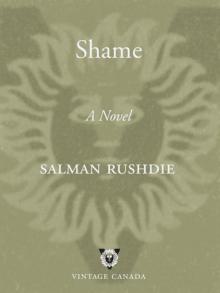 Shame
Shame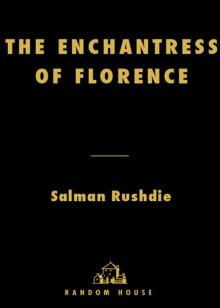 The Enchantress of Florence
The Enchantress of Florence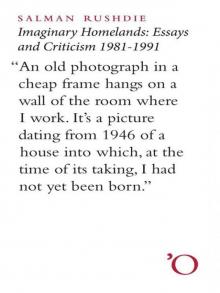 Imaginary Homelands: Essays and Criticism 1981-1991
Imaginary Homelands: Essays and Criticism 1981-1991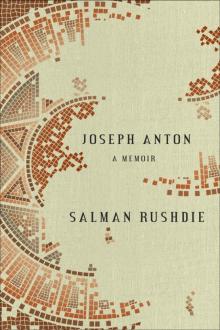 Joseph Anton: A Memoir
Joseph Anton: A Memoir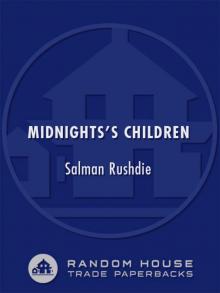 Midnight's Children
Midnight's Children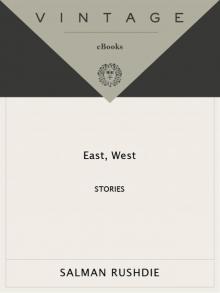 East, West: Stories
East, West: Stories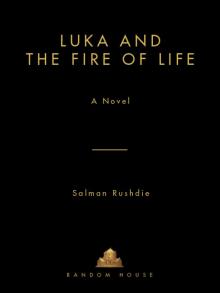 Luka and the Fire of Life
Luka and the Fire of Life Fury Fury Fury
Fury Fury Fury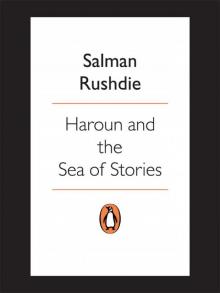 Haroun and the Sea of Stories
Haroun and the Sea of Stories Step Across This Line: Collected Nonfiction 1992-2002
Step Across This Line: Collected Nonfiction 1992-2002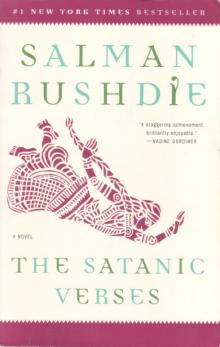 The Satanic Verses
The Satanic Verses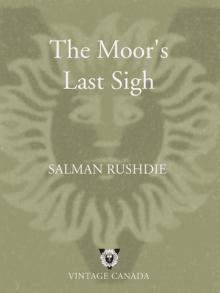 The Moor's Last Sigh
The Moor's Last Sigh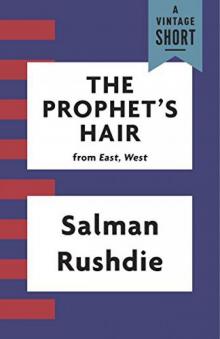 The Prophet's Hair
The Prophet's Hair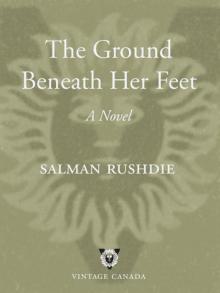 The Ground Beneath Her Feet
The Ground Beneath Her Feet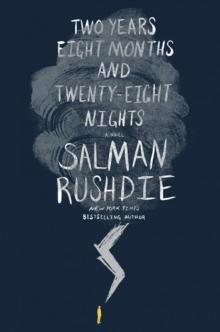 Two Years Eight Months and Twenty-Eight Nights
Two Years Eight Months and Twenty-Eight Nights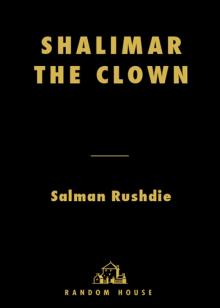 Shalimar the Clown
Shalimar the Clown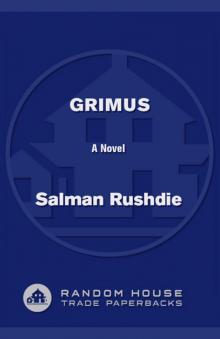 Grimus
Grimus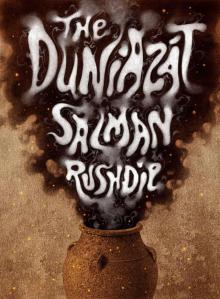 The Duniazát
The Duniazát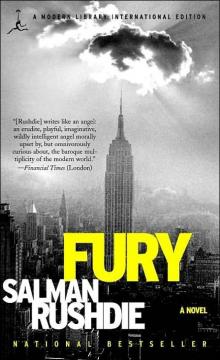 Fury
Fury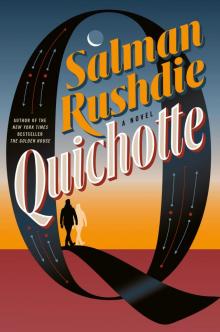 Quichotte
Quichotte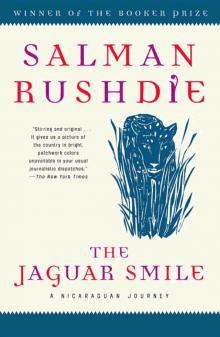 The Jaguar Smile
The Jaguar Smile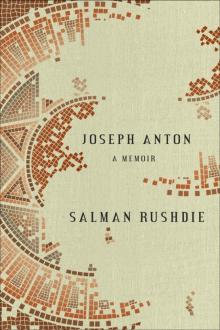 Joseph Anton
Joseph Anton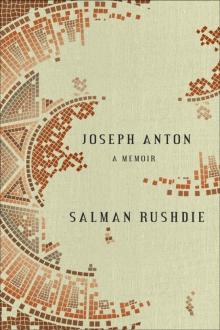 Joseph Anton: A Memoir: A Memoir
Joseph Anton: A Memoir: A Memoir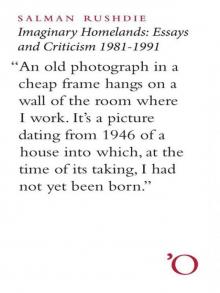 Imaginary Homelands
Imaginary Homelands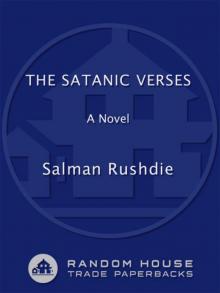 The Satanic Verses: A Novel
The Satanic Verses: A Novel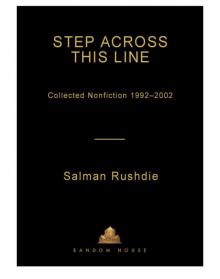 Step Across This Line
Step Across This Line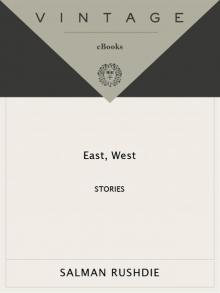 East, West
East, West